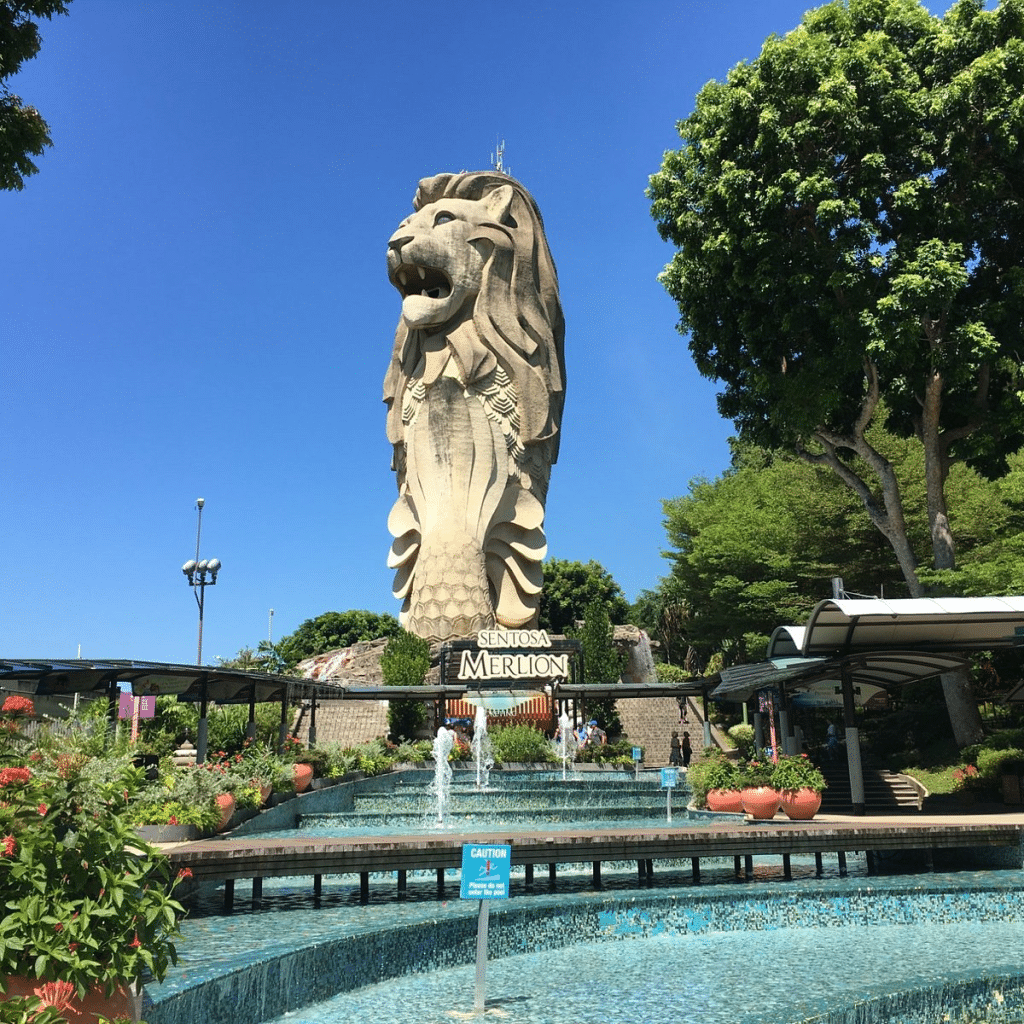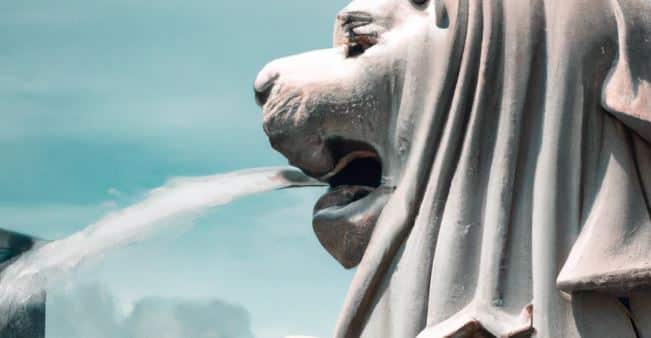The Merlion is the instantly recognizable symbol of Singapore, ubiquitously depicted in tourist memorabilia and souvenirs. With the head of a lion and the body of a fish, the Merlion’s unique form encapsulates Singapore’s origins and history.
This article traces the origins and evolution of the Merlion into a national icon.
History of the Merlion
The Merlion was designed in 1964 by the Singapore Tourist Promotion Board (currently the Singapore Tourism Board) as an emblem for the country. Its creation was inspired by the tale of a prince named Sang Nila Utama.
According to legend, Prince Sang Nila Utama arrived on our shores in the 13th century and established Singapore as a fishing village. While exploring, he spotted an unusual animal which he mistakenly thought was a lion. Thus he named the island Singapura or Lion City in Sanskrit.
This legendary story, combined with Singapore’s modern status as a bustling port city, led to the symbolism behind the Merlion. Its head represents the city’s traditional name and origin myth while the fish body depicts Singapore’s current maritime status.
The Merlion Design
The Merlion sculpture was designed by artist Kwan Sai Kheong. Kwan incorporated elements of Malay, Chinese and Western mythological creatures in the beast’s design.
At the Merlion’s solemn eyes and strong jaws conveys strength and wisdom befitting a lion, while its fish-like scales and tail evoke the ocean. The juxtaposition neatly captures old and new Singapore.
Initially envisioned in red and white, the now familiar grey stone hue was chosen as more representative of statues found in Singapore.
The completed Merlion design was approved in November 1971. Registered as a trademark, the Merlion become a logo owned solely for use by the government.
The Original Merlion Statue
The first and original Merlion statue was sculpted from November 1971 to August 1972 by local sculptor Lim Nang Seng. It measured 8.6 meters tall and weighed 72 tons.
The statue was located at the mouth of the Singapore River in Merlion Park overlooking Marina Bay. It was officially unveiled on 15 September 1972 by then Prime Minister Lee Kuan Yew as an emblem of Singapore.
Relocation and Redevelopment
In 1997, the original statue was relocated 120 meters to the current Merlion Park near One Fullerton.
This was due to extension works for the Esplanade Bridge. The relocation enabled restoration and rejuvenation of the aging statue.
In 2009, the Merlion Park underwent redevelopment works, temporarily removing the statue. It was later re-erected on newer foundations and with improved visitor amenities.
The Original Merlion’s Legacy
The original Merlion statue at Merlion Park remains standing tall today as Singapore’s most enduring national personified symbol.
It attracts throngs of tourists and locals eager for an iconic selfie or photo. The sculpture has featured prominently on stamps, currency notes and tourism brochures as a national emblem for over 50 years.
Although replicas have since emerged, the original Merlion remains distinct in stature and spirit as a proud national treasure.
Unauthorized Use of the Merlion
As an official national mark, the Merlion is protected from unauthorized commercial exploitation to preserve its integrity.
The Singapore Tourism Board strictly regulates and monitors use of Merlion images or replicas. Commercial entities cannot depict or create their own Merlion without permission. Offenders face legal penalties.
Such tight control prevents abuse and oversaturation of a treasured national symbol.
Merlion Cub Sculptures

A number of Merlion Cub sculptures have been designed as secondary national symbols aimed at the tourism market. These cubs measure 2-3 meters in height.
The Merlion Cub sculptures portray a more adorable, cartoonish version of the Merlion suitable for decoration and photo opportunities.
Over 30 authorized Merlion Cub replicas exist around Singapore at tourist spots like Sentosa and Mt Faber. They serve as fun junior counterparts to the grand original statue.
Sentosa Merlion

The most significant Merlion replica is the giant 37-meter tall Sentosa Merlion on Sentosa Island. Four times larger than the original, it was built in 1995 at a then-record S$7.5 million cost.
Designed by Australian sculptor James Martin, the Sentosa Merlion offered panoramic views from within the figure and an interactive museum.
However, due to high maintenance costs, the Sentosa Merlion was closed to visitors in 2019 and will be demolished. Until then, it remains a defining island landmark.
Merlion Symbolism and Legacy
The Merlion represents Singapore’s national identity and vitality as a Lion City transformed into a bustling economic powerhouse.
Through the decades, it has come to personify Singaporean grit, resilience, openness and resourcefulness. The indomitable statue continues inspiring pride and unity.
The Merlion vividly captures Singapore’s complex multi-dimensional nature and trajectory from past to present. Regardless of its origins as a made-up mythological creature, the Merlion endures at the heart of Singaporean consciousness.
As the original sculpture approaches its 50th anniversary, the Merlion remains a instantly recognisable icon welcoming visitors and a enduring national treasure of which Singaporeans are rightly proud.

Goh Jun Cheng is the chief staff writer for SingaporeAirport.com. Jun Cheng graduated with a degree in journalism from Nanyang Technological University in Singapore.
He has over 5 years of experience writing about aviation, tourism, and lifestyle topics relevant to locals and visitors in Singapore. His articles provide insights into the rich culture, cuisine, and attractions of Singapore. Jun Cheng is an avid traveler who has visited over 15 countries.
When he is not writing or traveling, he enjoys photography, trying new foods, and hiking. As a longtime Singapore resident, Jun Cheng is passionate about sharing hidden gems and perspectives about his home country.




